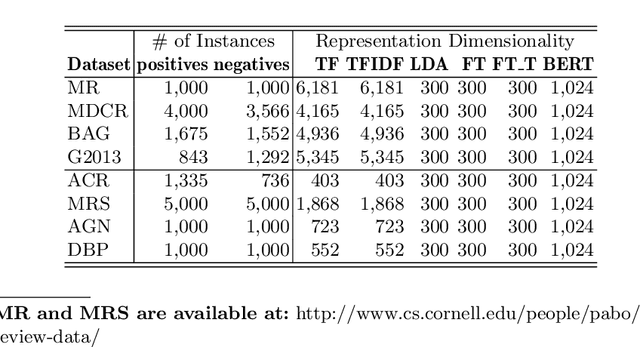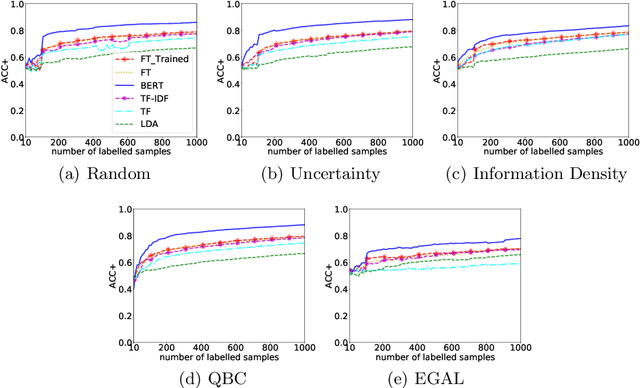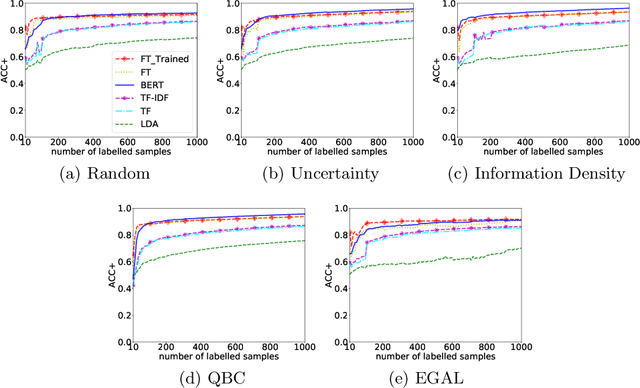Investigating the Effectiveness of Representations Based on Word-Embeddings in Active Learning for Labelling Text Datasets
Paper and Code
Oct 10, 2019



Manually labelling large collections of text data is a time-consuming, expensive, and laborious task, but one that is necessary to support machine learning based on text datasets. Active learning has been shown to be an effective way to alleviate some of the effort required in utilising large collections of unlabelled data for machine learning tasks without needing to fully label them. The representation mechanism used to represent text documents when performing active learning, however, has a significant influence on how effective the process will be. While simple vector representations such as bag of words have been shown to be an effective way to represent documents during active learning, the emergence of representation mechanisms based on the word embeddings prevalent in neural network research (e.g. word2vec and transformer-based models like BERT) offer a promising, and as yet not fully explored, alternative. This paper describes a large-scale evaluation of the effectiveness of different text representation mechanisms for active learning across 8 datasets from varied domains. This evaluation shows that using representations based on modern word embeddings---especially BERT---, which have not yet been widely used in active learning, achieves a significant improvement over more commonly used vector-based methods like bag of words.
 Add to Chrome
Add to Chrome Add to Firefox
Add to Firefox Add to Edge
Add to Edge